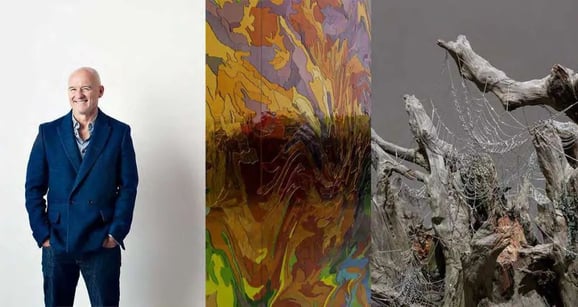Understanding the geometric abstraction in Sol LeWitt’s work provides insights into the deeper connections between mathematics, art, and perception. His innovative approach challenges traditional artistic boundaries, inviting viewers to engage with the underlying structures of visual experience. This exploration is not only relevant to art enthusiasts but also to anyone interested in the intersections of creativity and logic.
The Foundations of Geometric Abstraction
Sol LeWitt was a pioneer of geometric abstraction, a movement that emphasized form, structure, and spatial relationships over representational content. His work often utilized simple geometric shapes and patterns, conveying complex ideas through minimal means. LeWitt believed in the power of the conceptual framework behind a piece, positing that the artist’s idea holds more significance than the finished product itself. This perspective shifted how art could be perceived, suggesting that the act of creation could be distilled into a set of instructions or a language of form.
One of LeWitt’s most notable contributions was his use of wall drawings, which allowed for the exploration of space in a unique way. The instructions for these drawings could be interpreted and executed by others, emphasizing the collaborative nature of art. This method reinforces the idea that art is not just about individual expression but also about shared experience and dialogue. Viewers are challenged to reconsider the authenticity of artistic authorship, as the execution itself becomes a performance of the artist’s concept.
LeWitt’s geometric abstraction has had a profound influence on contemporary art, encouraging artists to move beyond traditional techniques and mediums. His work resonates with the rise of minimalism and conceptual art in the latter half of the 20th century, pushing the boundaries of how art can be defined and experienced. The principles he established continue to inspire new generations of artists exploring the relationships between mathematical structures, visual media, and viewer interaction. In essence, LeWitt’s emphasis on clarity and simplicity invites audiences to engage more deeply with the artworks they encounter.
Exploring the geometric abstraction of Sol LeWitt opens a window to understand how art can encapsulate complex ideas through simplicity. By delving into his principles and methods, one can appreciate not only the visual allure of his works but also the profound concepts they embody. To learn more about LeWitt and his influence on the art world, consider visiting local galleries or diving into literature about contemporary art movements.


